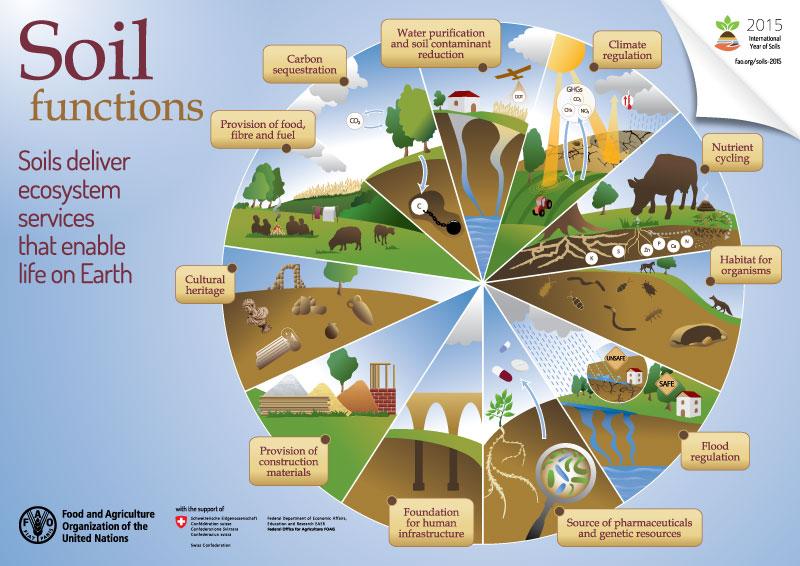

 3
3




List of Bryant RedHawk's Epic Soil Series Threads We love visitors, that's why we live in a secluded cabin deep in the woods. "Buzzard's Roost (Asnikiye Heca) Farm." Promoting permaculture to save our planet.
 2
2




No rain, no rainbow.












 3
3




List of Bryant RedHawk's Epic Soil Series Threads We love visitors, that's why we live in a secluded cabin deep in the woods. "Buzzard's Roost (Asnikiye Heca) Farm." Promoting permaculture to save our planet.
 1
1




Living free starts with understanding ones own emotions and emotion affects and controls us.












 1
1




List of Bryant RedHawk's Epic Soil Series Threads We love visitors, that's why we live in a secluded cabin deep in the woods. "Buzzard's Roost (Asnikiye Heca) Farm." Promoting permaculture to save our planet.




Medicinal herbs, kitchen herbs, perennial edibles and berries: https://mountainherbs.net/ grown in the Blue Mountains, Australia
















Ryan Hobbs wrote:
The Bacteria may have a relationship with the mychorizae fungi that we don't know about that results in greater nutrient uptake in plants that do not necessarily have a symbiotic relationship with the fungi.
I intend to explore this hypothesis in the future as a possible explanation as to why the radishes were larger despite no known mychorizal relationship with the Brassicaceae family. should I gain access to a microscope, I may discover that there is a relationship that was overlooked or not.
I am rather enjoying this series and look forward to reading the rest.
List of Bryant RedHawk's Epic Soil Series Threads We love visitors, that's why we live in a secluded cabin deep in the woods. "Buzzard's Roost (Asnikiye Heca) Farm." Promoting permaculture to save our planet.












 2
2




List of Bryant RedHawk's Epic Soil Series Threads We love visitors, that's why we live in a secluded cabin deep in the woods. "Buzzard's Roost (Asnikiye Heca) Farm." Promoting permaculture to save our planet.
 4
4






Dave's SKIP BB's / Welcome to Permies! / Permaculture Resources / Dave's Boot Adventures & Longview Projects


























 1
1




Angelika Maier wrote:Hi Briant I read all your threads, albeit a little bit later. But they are timeless!
I have some questions about the dirt part (for you it's maybe bygone area but I just begin to try to understand that part): I read Solomon's book and got that soil test and he says he recommends rather high levels of amendments. Now you are telling that the critters get fat and lazy doing so. Do you think Steve's target levels are too high? And if yes with what would you replace them?
Second: you don't explain much about the dirt part - I know it is not in your focus anymore, but I still would like to know a bit more at least some basics. CAn you recommend a good dirt read? Something for people who forgot about all their chemistry stuff from school?
When will you finnish your book? I will definitively buy it!
And I need some more maybe video explanation how to work the soil. (I hate videos) But my parents used to dig over winter (I don't do that) then to hoe thoroughly and rake to make a nice seed bed. I do roughly the same, but I do mulching. For the manual part videos are good.
List of Bryant RedHawk's Epic Soil Series Threads We love visitors, that's why we live in a secluded cabin deep in the woods. "Buzzard's Roost (Asnikiye Heca) Farm." Promoting permaculture to save our planet.




 4
4




 1
1




This acid surface also keeps earthworms from feeding and allows the buildup of a dead grass thatch and a sod-bound root zone.
"Study books and observe nature; if they do not agree, throw away the books." ~ William A. Albrecht
 3
3
















 4
4




List of Bryant RedHawk's Epic Soil Series Threads We love visitors, that's why we live in a secluded cabin deep in the woods. "Buzzard's Roost (Asnikiye Heca) Farm." Promoting permaculture to save our planet.
 2
2





"Study books and observe nature; if they do not agree, throw away the books." ~ William A. Albrecht




"Study books and observe nature; if they do not agree, throw away the books." ~ William A. Albrecht












 1
1




List of Bryant RedHawk's Epic Soil Series Threads We love visitors, that's why we live in a secluded cabin deep in the woods. "Buzzard's Roost (Asnikiye Heca) Farm." Promoting permaculture to save our planet.
 1
1




Bryant RedHawk wrote:Installment 2.
Soil Orders and General Descriptions
Type Description
Entisols Little, if any horizon development
Inceptisols Beginning of horizon development
Aridisols Soils located in arid climates
Mollisols Soft, grassland soils
Alfisols Deciduous forest soils
Spodosols Acidic, coniferous forest soils
Ultisols Extensively weathered soils
Oxisols Extremely weathered, tropical soils
Gelisols Soils containing permafrost
Histosols Soils formed in organic material
Andisols Soil formed in volcanic material
Vertisols Shrinking and swelling clay soils
Redhawk
It's my space, my mess.
If you don't like it, don't come in.
 1
1




Invasive plants are Earth's way of insisting we notice her medicines. Stephen Herrod Buhner
Everyone learns what works by learning what doesn't work. Stephen Herrod Buhner
















List of Bryant RedHawk's Epic Soil Series Threads We love visitors, that's why we live in a secluded cabin deep in the woods. "Buzzard's Roost (Asnikiye Heca) Farm." Promoting permaculture to save our planet.




Anne Miller wrote:This is by county so maybe this will help:
https://www.nrcs.usda.gov/wps/portal/nrcs/detail/id/soils/?cid=nrcs144p2_047791
It's my space, my mess.
If you don't like it, don't come in.




Bryant RedHawk wrote:Your soil falls into the mollisol type in my list. The information you found is great, the geological survey has moved their classification method to the most recent methodology over the last 10 years. Now they list particle sizes and depths for each horizon. The Loess region of China consists of the same type(s) of soils, very fertile land when properly managed, highly erosive when not properly managed. The soil came from eroded basalt.
Jacket silt soil generally is found on slopes of up to 50% grades, plateues and in the USA is generally used for pasture land.
Redhawk
It's my space, my mess.
If you don't like it, don't come in.




Loretta Liefveld wrote:
Bryant RedHawk wrote:Your soil falls into the mollisol type in my list. The information you found is great, the geological survey has moved their classification method to the most recent methodology over the last 10 years. Now they list particle sizes and depths for each horizon. The Loess region of China consists of the same type(s) of soils, very fertile land when properly managed, highly erosive when not properly managed. The soil came from eroded basalt.
Jacket silt soil generally is found on slopes of up to 50% grades, plateues and in the USA is generally used for pasture land.
Redhawk
Thanks, Brian. Yep.... basalt. Most of it doesn't seem very 'eroded' though. See my previous response.
We have two hayfields on our property, and I haven't tried to dig in that, just around the house.
It's my space, my mess.
If you don't like it, don't come in.




Permaculture Education, Blog and Resources https://www.milkwood.net
https://www.instagram.com/milkwood_nick/




 1
1
















 2
2




Sean Govan wrote:Dr. Redhawk, after reading this thread I have a bunch more questions. Thanks again for putting this out there.
1. Would regular driveway salt (you know, for melting ice) work as a soil amendment if it is 100% halite? Halite has all the same 90 minerals as regular sea salt, right? I ask because this is cheap and abundant at Menards.
2. The bags of halite that I have contain some grayish/blackish chunks. Is this hydrocarbon contamination? If so, will that be a problem for my soil, veggies, or meat?
3. Since beginning rotational grazing this year, I've discovered that I need to scythe under the fence a lot to keep it from shorting out. What do you think of pouring a line of halite under my permanent fencelines to reduce scything? I'm thinking it might keep the plant growth down for a few years, while the minerals slowly spread toward the middle of the pasture through leaching and the food web. Maybe the concentrated salty area would also benefit insects and other wildlife. Or is this a bad idea?
4. Some sites selling sea salt for soil seem to say that all the first 92 elements (of the periodic table) are necessary for optimum plant and animal health. What about things like lead, cadmium, arsenic, mercury, and aluminum? Are these things beneficial in any amount, in any way at all?
5. How to deal with old junkpiles on our property, containing everything from rusty barb wire to asphalt roofing shingles? Bury it in a giant pile of topsoil and wood chips?
6. You mentioned that synthetic nutrients make the soil microbes "fat and lazy" because the plants can just suck up the nutrients. Is that the case for urine?
(The reason I'm using urine is, that I spread some sawdust soaked in cow manure on the garden last winter. Our pigs tilled it into the soil, and then the plants we put there got yellow leaves. So I started pouring diluted urine at the base of the plants every day, and they started greening back up. And now there's huge amounts of mushrooms growing under the shade of the plants. So I feel like the urine activated the mushrooms and they're breaking down the sawdust.)
Thanks for your time,
Sean
List of Bryant RedHawk's Epic Soil Series Threads We love visitors, that's why we live in a secluded cabin deep in the woods. "Buzzard's Roost (Asnikiye Heca) Farm." Promoting permaculture to save our planet.
 1
1




Marge Mogelnicki wrote:Mary, I recienyly read that the plant/herb cleavers has silica we can use.

|
Note to self: don't get into a fist fight with a cactus. Command this tiny ad to do it:
Homestead Pigs Course
https://permies.com/wiki/365748/Homestead-Pigs
|






